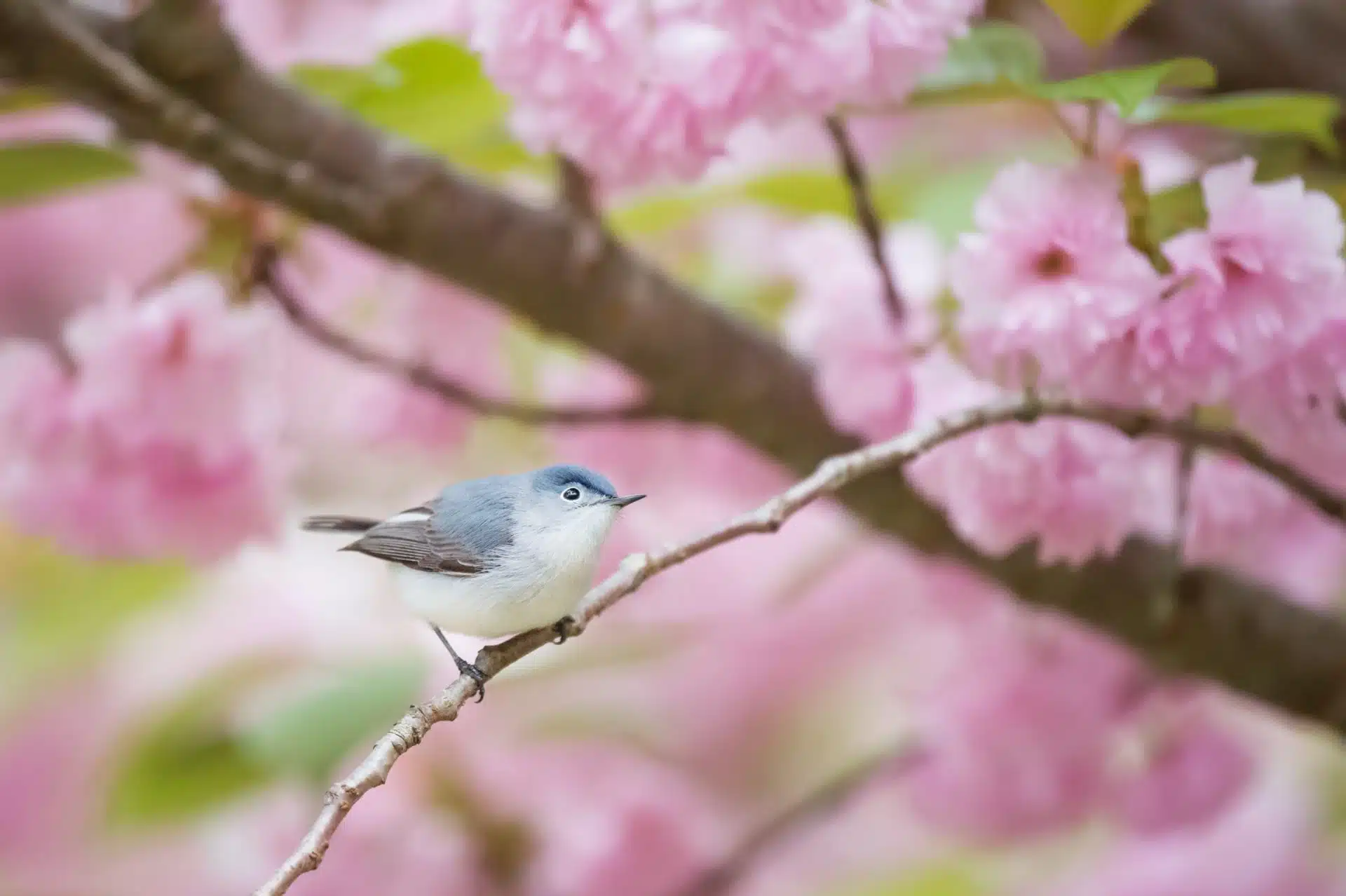Birds
Blue-gray Gnatcatcher
Polioptila caerulea

Voice: Song: series of thin notes which may contain mimicry notes of other birds; Call:
soft, nasal “Spee, Spee.”
Blue-gray gnatcatchers are the northernmost occurring species of gnatcatcher family, and
the only truly migratory gnatcatcher. In the fall, the resident population of
gnatcatchers joins large flocks of other birds to migrate south for the winter. Gnatcatchers
appear in Ohio in the spring just as small insects become active in deciduous wooded
habitats, including shrublands to mature forest. Some people consider the arrival of the
blue-gray gnatcatcher a better sign of spring than the American robin.
Blue-gray gnatcatchers feed exclusively on insects and spiders. They forage for food near
tips of branches, constantly moving through foliage. They take prey while perched,
hovering or by catching them in mid-air. They often flick their white-edged tail from side
to side to scare up hiding insects in trees. If an insect is too large they will remove the
wings and sometime beat the large prey on a perch.
Blue-gray gnatcatchers usually begin nesting in the month of April or May. They will
take apart old completed or partly built nests and reuse the materials to build a new nest.
Nest building is done by the male and female. Placed far out from trunk on tree limbs
near water, nests are open cup shaped with high walls made of spider webbing or
caterpillar silk, covered with lichens or bark flakes, and lined with grass stems, bark
strips, plant down, hair, feathers or other fine fibers.
Female blue-gray gnatcatchers lay four or five purple-brown spotted pale blue eggs.
Incubation is done by the male and the female for about 13 days. Young are tended to by
both parents. Nestlings open their eyes in five days, and fledge from the nest in 10-12
days. Both parents feed the fledglings up to a week or more after they leave the nest. Two
broods are typically produced each breeding season.
Blue-gray gnatcatcher populations are relatively stable. However protection of extensive
tracts of forest is considered to be important for blue-gray gnatcatchers. Preservation of
forests with ponds, rivers and stream are essential for the blue-gray gnatcatchers’
reproduction and survival
Best Location to View: Corning Lake, Helen Layer Rhododendron Garden
Color: Male: blue-gray body, including most of head and back. Crown has a black line that extends along the sides of crown; white eye ring. Wings brownish gray. Under parts entirely white. Female: similar except more gray.
Range: Summers throughout much of the United States except for the Pacific Northwest and the northern tier of states. Winters in the extreme southern United States and southward.
Size: 3.9”-4.5”
Wingspan: 6"




